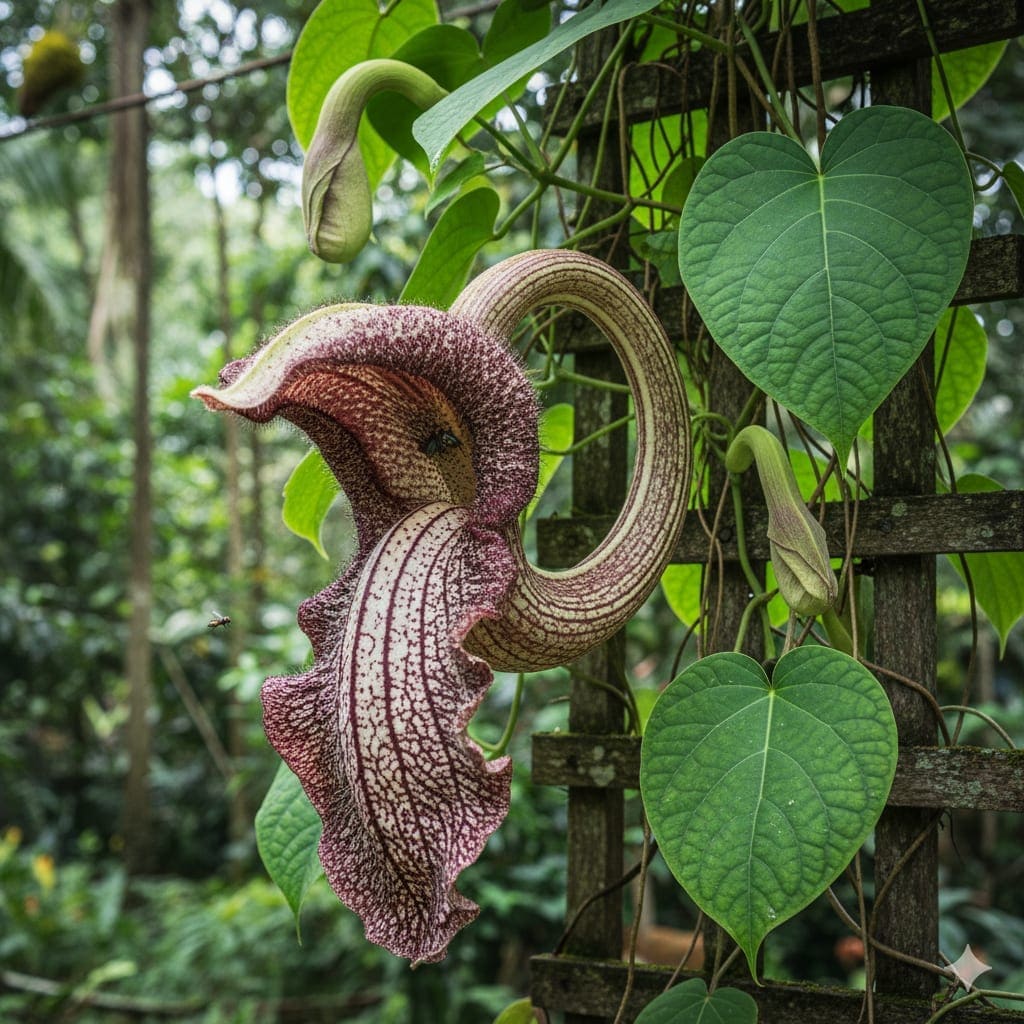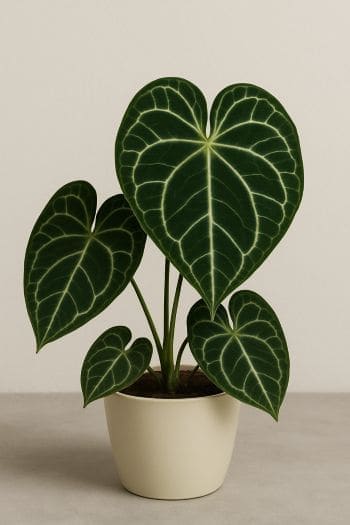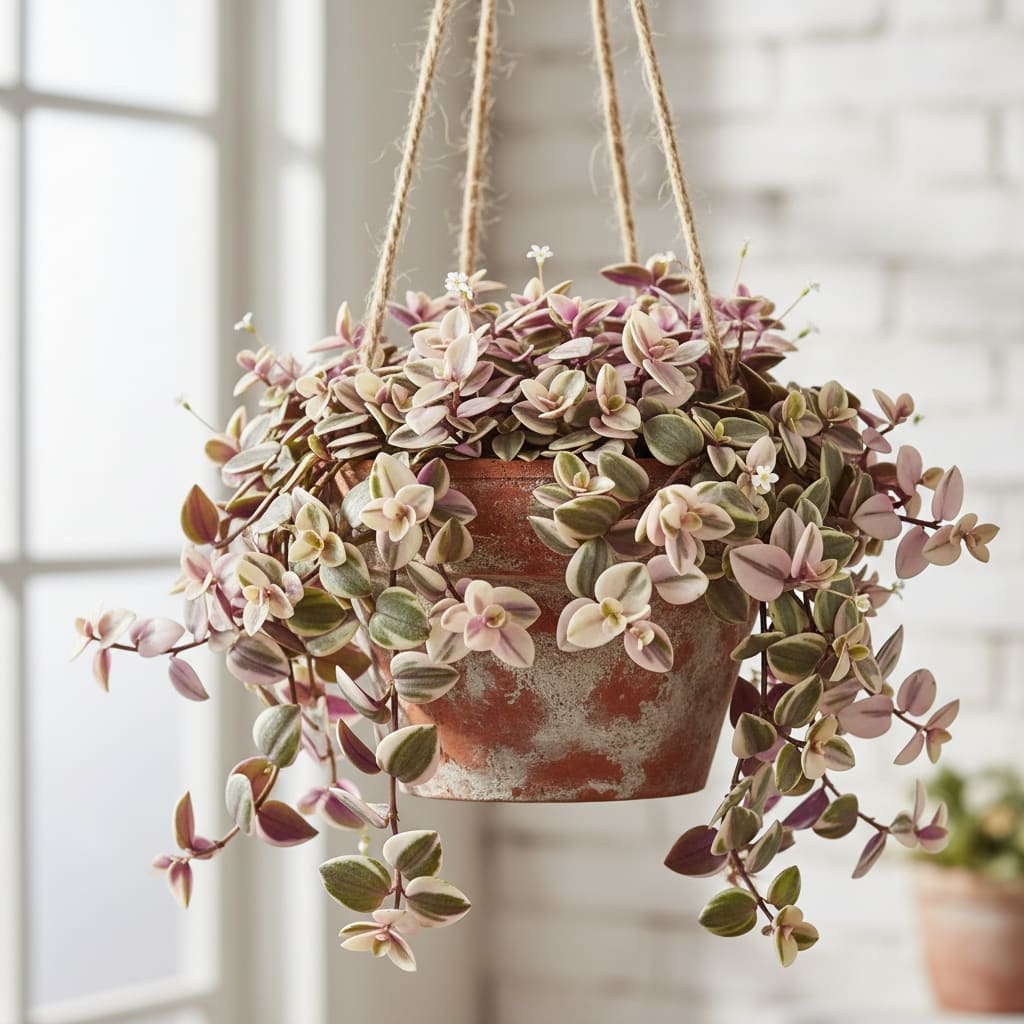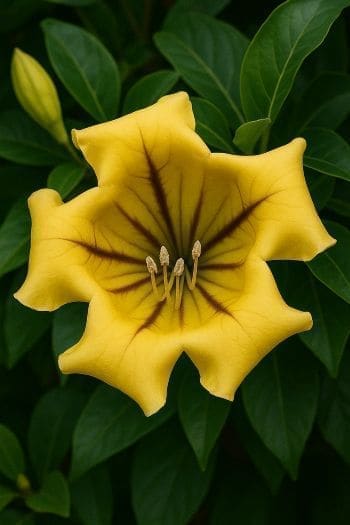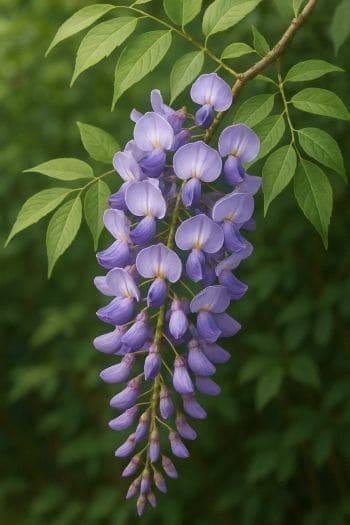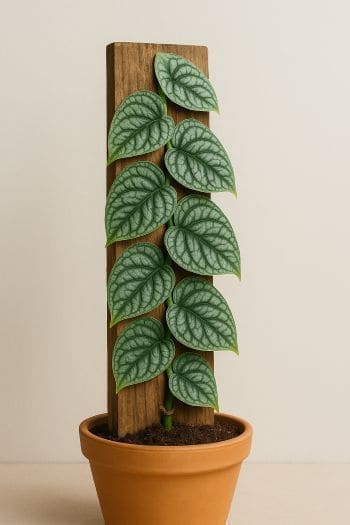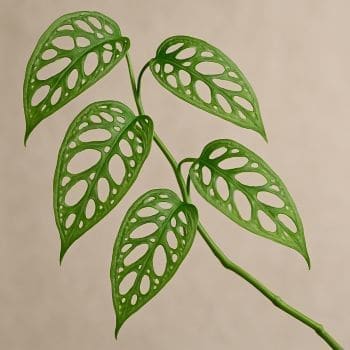Aristolochia gigantea (Brazilian Dutchman's Pipe) Care & Growing Guide
Overview
Aristolochia gigantea, commonly known as the Brazilian Dutchman's Pipe or Giant Pelican Flower, is a striking tropical vine native to Central and South America. Celebrated for its massive, uniquely patterned blooms, this plant is both an ornamental conversation piece and a fascinating example of botanical adaptation. In its natural habitat, it climbs through trees in warm, humid forests, using its unusual flowers to attract pollinators such as carrion flies by mimicking the appearance and scent of decaying matter.
With the right care, Aristolochia gigantea can thrive in home gardens or greenhouses, producing lush foliage and extraordinary flowers that can measure over 30 cm (12 inches) across.
Identification & Growth Habit
This species is a vigorous, evergreen climbing vine that can reach several meters in length when given adequate support. Its leaves are large, heart-shaped, and bright to medium green. The flowers are its most distinctive feature: broad, flat, and mottled with maroon, purple, and cream, with a curved "tail" extending from the bloom. The plant uses twining stems to climb, making it ideal for training on trellises, arbors, or moss poles.
Light & Placement
Provide bright, indirect light for optimal growth. An east-facing window or a spot slightly back from a south-facing window works well. While it can tolerate some gentle morning or late-afternoon sun, avoid prolonged midday direct sunlight, which can scorch the leaves. Outdoors in warm climates, position it where it receives filtered sunlight beneath taller plants or structures.
Watering & Humidity
Water consistently during the growing season, allowing the top inch (2–3 cm) of soil to dry between waterings. Overwatering can lead to root rot, so ensure excess water drains freely. In winter, reduce watering slightly as growth slows.
This plant thrives in high humidity (above 50%), reflecting its tropical origins. Increase humidity by:
- Using a room humidifier
- Placing the pot on a pebble tray with water (without submerging the base)
- Grouping plants together to create a microclimate
Soil & Repotting
Use a well-draining, organic-rich soil mix. A blend of quality potting soil, perlite, and compost supports healthy root development while preventing waterlogging. Repot every 1–2 years in spring if the plant becomes root-bound, moving up to a container 1–2 inches larger in diameter.
Fertilizing
Feed monthly during spring and summer with a balanced liquid fertilizer diluted to half strength. This supports vigorous vine growth and flowering. Reduce feeding in autumn and winter when the plant's growth naturally slows.
Pruning & Training
Prune to control size, remove dead or damaged growth, and encourage branching. Use clean, sharp shears and cut just above a leaf node. Aristolochia gigantea responds well to training:
- Trellis: Guide stems through or around a sturdy trellis for vertical coverage.
- Moss pole: Anchor stems with soft ties to a moss pole to encourage upright growth indoors.
- Arbor or pergola: In outdoor settings, allow it to cover overhead structures for dramatic floral displays.
Propagation
Aristolochia gigantea can be propagated via stem cuttings. Follow these steps:
- In spring or early summer, select a healthy, non-flowering stem.
- Cut a 4–6 inch (10–15 cm) section with at least two nodes.
- Remove the lower leaves, leaving one or two at the top.
- Place the cutting in water or insert it into moist, well-draining soil.
- Maintain warmth (around 75°F / 24°C) and high humidity.
- Roots should develop in several weeks; transplant to a larger pot once established.
Common Problems
Pests
- Aphids: Small green or black insects on new growth; treat with insecticidal soap or neem oil.
- Spider mites: Fine webbing and stippled leaves; increase humidity and use miticide if needed.
- Whiteflies: Tiny white insects that fly up when disturbed; manage with yellow sticky traps and insecticidal sprays.
Diseases
- Root rot: Caused by overwatering and poor drainage; remove affected roots and repot in fresh, well-draining soil.
- Leaf spot: Fungal or bacterial spots on leaves; improve air circulation and remove affected foliage.
Toxicity & Pet Safety
Warning: Aristolochia gigantea is toxic if ingested by humans or animals. Keep it out of reach of pets and children, and wear gloves when handling if you have sensitive skin.
Styling & Decor Tips
Due to its dramatic flowers and lush foliage, this plant works well as a focal point in conservatories, sunrooms, or shaded patios. Indoors, position it where its blooms can be appreciated up close, such as near a seating area. Outdoors in frost-free zones, it can be used to cover unattractive walls or fences.
Varieties & Cultivars
Aristolochia gigantea is the primary cultivated form, though it may be confused with related species such as Aristolochia grandiflora. Always verify the species when purchasing to ensure you get the desired flower form and size.
Buying Tips & Maturity
When buying, look for healthy, pest-free plants with vibrant leaves and no signs of wilting or discoloration. Younger plants may take a season or more to flower; mature specimens with established root systems will bloom more reliably under ideal conditions.
Seasonal Care
- Spring: Resume regular feeding, repot if needed, and prune to shape.
- Summer: Maintain consistent watering and high humidity; watch for pests.
- Autumn: Reduce feeding; continue to provide bright light as days shorten.
- Winter: Protect from cold drafts; water less frequently but do not allow soil to dry completely.
FAQ
- How big do Aristolochia gigantea flowers get? The blooms can exceed 30 cm (12 inches) across under optimal conditions.
- Can I grow it outdoors year-round? Only in frost-free climates; otherwise, grow in a container and bring indoors during cold weather.
- Does it need a support to grow? Yes, it is a climbing vine and benefits from trellises, poles, or other structures.
- How long before it flowers? From seed or young plants, it may take 1–2 years to reach flowering maturity, depending on care and environment.
- Is it suitable for small spaces? It can be grown in containers with regular pruning, but its vigorous growth requires management.
Troubleshooting Scenarios
- Leaves yellowing from the bottom up: Often a sign of overwatering or nutrient deficiency; check soil moisture and consider a balanced fertilizer.
- No flowers despite healthy foliage: May result from insufficient light or excessive nitrogen; move to a brighter location and adjust feeding.
- Wilting in high heat: Can occur if roots dry out too quickly; provide afternoon shade and mulch the soil surface outdoors.
Advanced Pruning & Training
For experienced growers, selective pruning can be used to stagger flowering and maintain a continuous display. Pinching back the tips of vigorous shoots encourages lateral growth, which can bear more blooms. Espalier techniques against a wall or fence can create a living tapestry of leaves and flowers, while spiral training around a central pole produces a compact, columnar specimen suitable for patios.
Companion Plant Ideas
Pairing Aristolochia gigantea with plants that share similar moisture and light needs can enhance its visual impact and ecological value:
- Passiflora spp. (Passionflowers): Complementary exotic blooms and climbing habit.
- Heliconia spp.: Bold tropical foliage and vibrant bracts for contrast.
- Ferns: Provide lush underplanting and maintain humidity.
- Hibiscus rosa-sinensis: Large, colorful flowers that echo the vine's drama.
Do & Don't List
- Do: Rotate containers periodically for even light exposure.
- Do: Inspect supports regularly to prevent damage from heavy vines.
- Don't: Allow soil to remain soggy for extended periods.
- Don't: Prune heavily during peak flowering unless necessary for health.
